The Schwarzach Mortar Collection – Europe’s Most Significant Mortars
On May 17th, parts of the largest European private collection of mortars will be auctioned at Lempertz in Cologne. The Schwarzbach Collection comprises over 4000 pieces in total, which have been collected in the course of two generations. The vessels cover more than 1000 years of art and cultural history, stemming from all regions where ore casting was pursued in early times. The earliest examples are Islamic mortars from Afghanistan and Iran dating from the 8th to the 14th century.
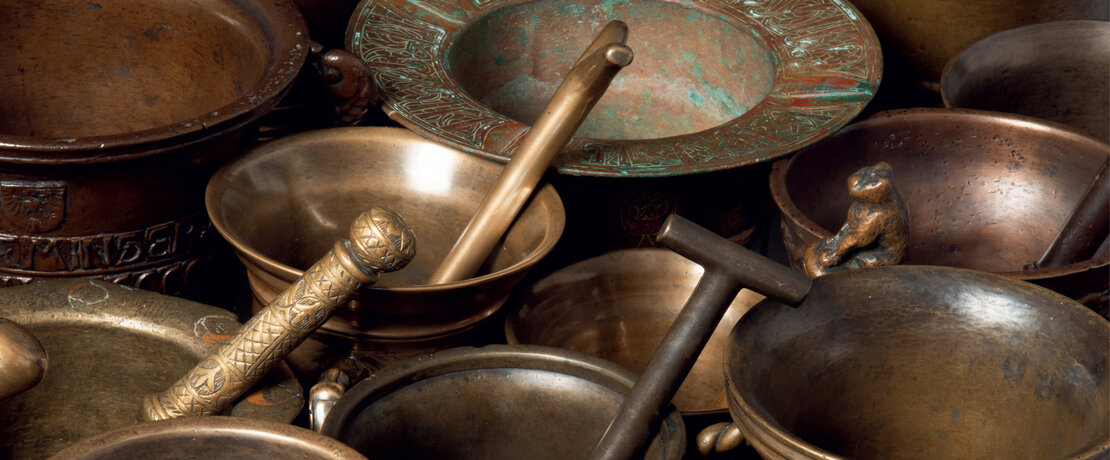
Towards the end of the 19th century, first works of art from the Mesopotamian region reached the collections of Western museums. The visitors were profoundly impressed by the early high culture, which was already engaged in bronze casting around 3,000 B.C., embellishing the products with silver or gold inlays. For a long time, the dating and attribution of Islamic metal objects was very difficult for experts. Most of the intarsia objects were traditionally attributed to the school of Mosul. Due to the emigration of craftsmen to Aleppo, Damascus and Iran, the techniques of the school of Mosul continued to exist in these regions. However, today we know that there was further technological input from the metal workers of Khorasan. Thus, we commence our tour of the world of historical mortars with the earliest examples of collections from Iran and Afghanistan.
Iran and Afghanistan – Sophisticated Mortars With Inlays and Kufic Inscription
Today, the historical landscape of Khorasan extends across many national borders. A large number of technically demanding metal works with inlays in various metals, opulent engravings, three-dimensional applications and Kufic inscriptions originate from this multi-ethnic area and deserve our greatest admiration.
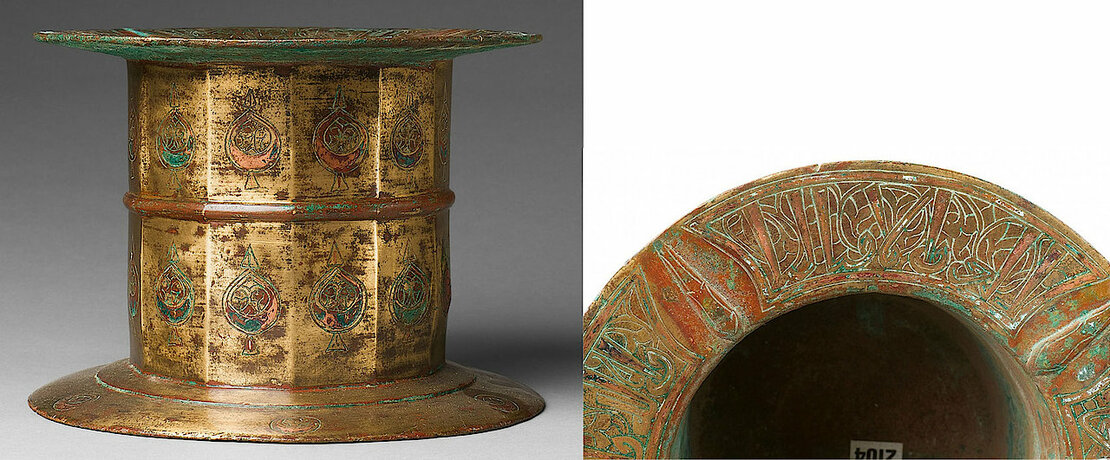
Lot 1002 Significant Iranian mortar, estimated price: €4,000 – €6,000
Spain – Mortars From Between the 13th and 16th Century
The mortars originating from between the 13th and 16th century are as austere and coarse as Spanish architecture. Their dominant feature is the vertical division by ribs or balusters. The designation of the foundrymen or customers is generally less common here. The application of a coat of arms denoting the house pharmacy could well be interpreted as luxurious design.
England – The Earliest European Bronze Mortars
The earliest European bronze mortars come from England. The shape is slightly concave with two strong, loop-like or angular handles. Similar to the early North German mortars, the decoration is laid out horizontally.
France – Ribbed Mortars From the 16th Century
It is striking for how long ribbed mortars were still cast in France during the 16th century. The French generally preferred wide, conical shapes. Around 1600, the ribs developed into pilasters. Typical are the razor-sharp letters, individually cast on plaques, naming the founders and customers.
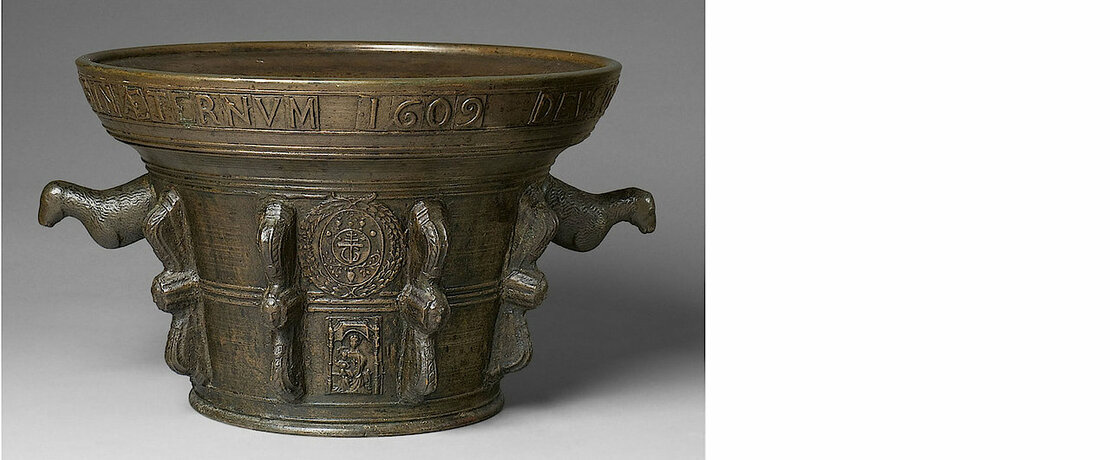
Lot 1020 Significant monastery mortar from the South of France, Estimated price: €20,000 – €30,000
North German Mortar With Disc Base
The earliest German mortar stands on a disc base; the sides are surrounded with horizontal profiles. In general, conical shapes were preferred, from the 16th century onwards with engraved or high relief three-dimensional decorative bands. A certain type of founder’s or foundry mark is also typical of the region.
West Germany and the Netherlands
In the densely populated Western European region, a great abundance of mortars was produced and in demand. Since the 15th century, almost all of theses featured a clear, slightly conical shape with a wide projecting lip and a strongly profiled base. There are many signatures, dates, and designations of customers and occasions in addition to blessings and motti.
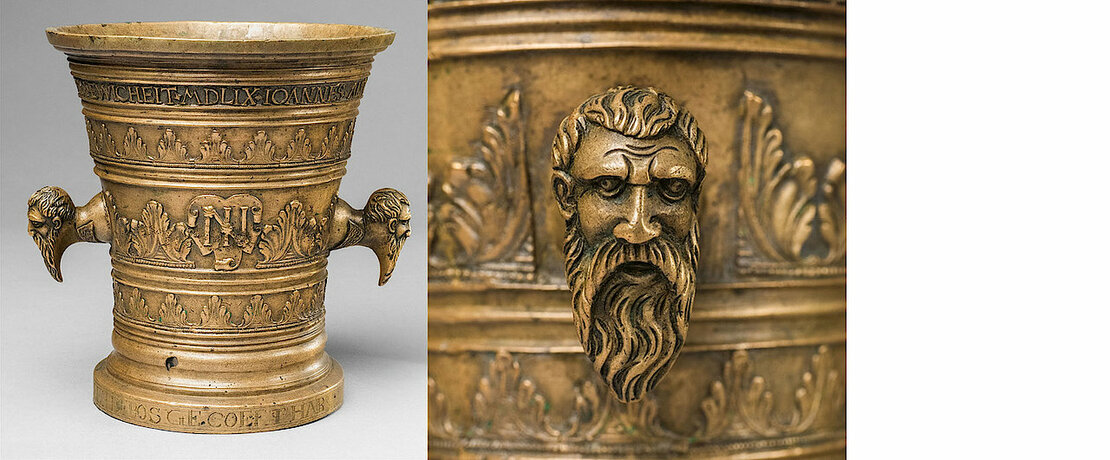
South Germany – Mortars With Delicately Stylised Claw Feet
A tall, slim, cylindrical shape with projecting, bell-shaped lip edge dominates the shape of mortars from Southern Germany, which usually have only one handle. The vertically structured sides with their thorn and column ribs reflect a formal language inspired by Gothic architecture. Particularly fine and stylised claw feet serve as the base and increase stability.
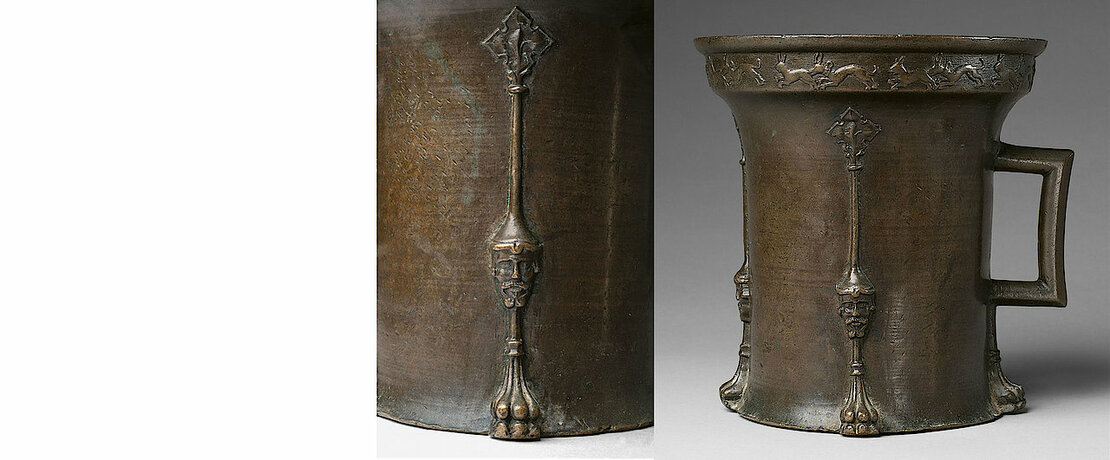
Lot 1072 Significant large one-handled mortar with hare hunting frieze, estimated price: €20,000 – €30,000
Mortar From Tirol
The form vocabulary of the South German mortar can also be found in Tirol, in South Tyrol in particular. The solid base plate, with intermittent waves, dominates the shape. There would have been more than enough space for a relief decoration on the mostly one-handled sides; however, the mortar from Tirol was more sparingly decorated than the Italian type south of the Alps.
Baroque Mortar From Switzerland
The Swiss mortar is rare. The baroque pieces presented here testify to French or even Dutch influence. Existing inscriptions are always in the spoken national language; Christian emblems are foregone. The precise casting requires experienced metallurgic technology.
Italian Mortars in Splendid Bell Casting
In Italy the close correlation to bell casting becomes apparent, more so than in any other manufacturing locations. The splendid, sweeping sides are not only reminiscent of bronze bells but also of the 2000-year old traditional shape of Roman crater vases.
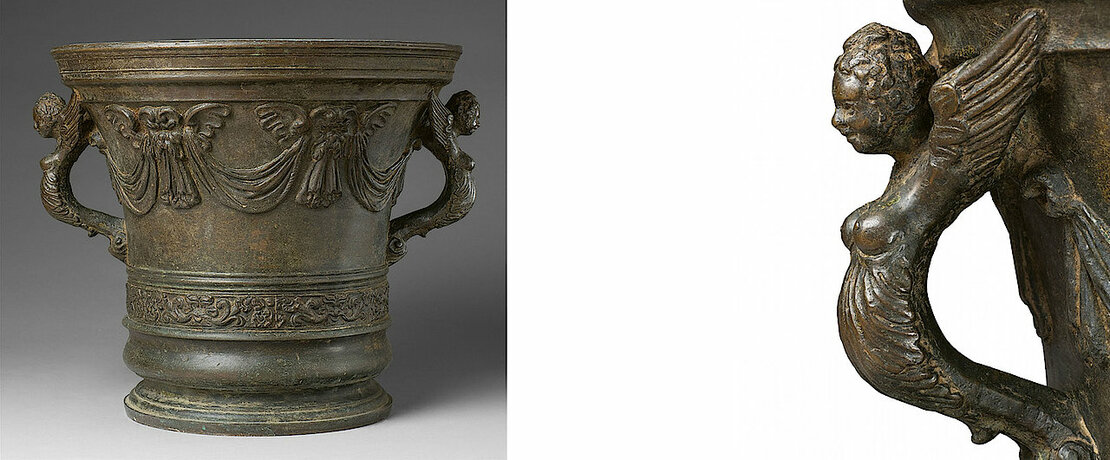
Lot 1111 Large Italian baroque mortar, estimated price: € 12,000 – € 15,000
Prof. Dr. Klaus Bergdolt, medical and art historian, relates appropriately: ‘Originally, and this is the fascinating thing, the mortar was one of the most important handcrafted utensils. It was familiar to everyone between India, Western Europe and Africa. Its rise from a multifunctional device to a work of art was not self-evident, but it is an impressive testimony to the aesthetics of everyday life, to which earlier generations paid tribute as a matter of Course.’
Quote: ‘Form follows function’
